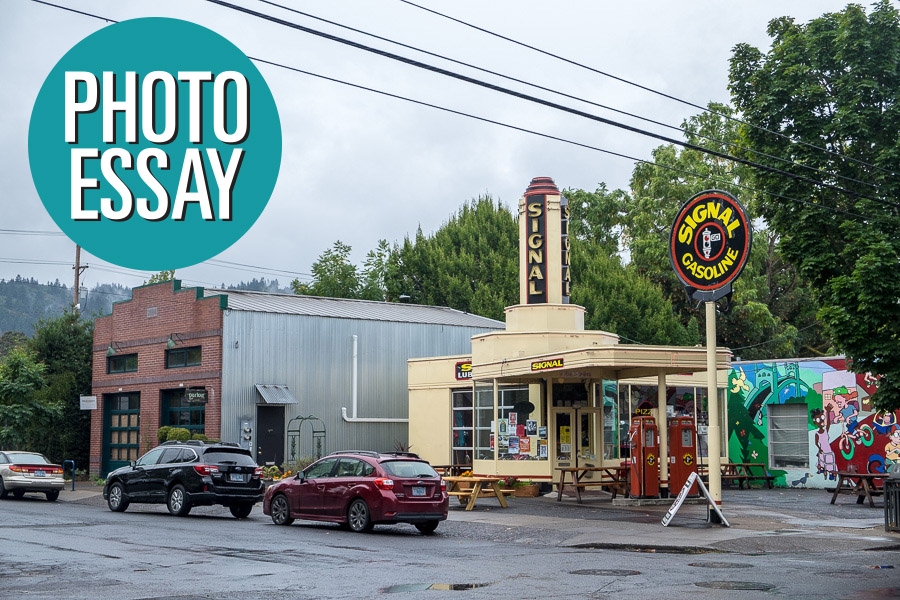Capturing the changing business landscape of this north Portland neighborhood.
Once a quirky, blue-collar neighborhood in north Portland, St. Johns is going through rapid change as an influx of new development transforms the face of the area. Photographer Jason Kaplan captures the shifting dynamics of St Johns’s business district.
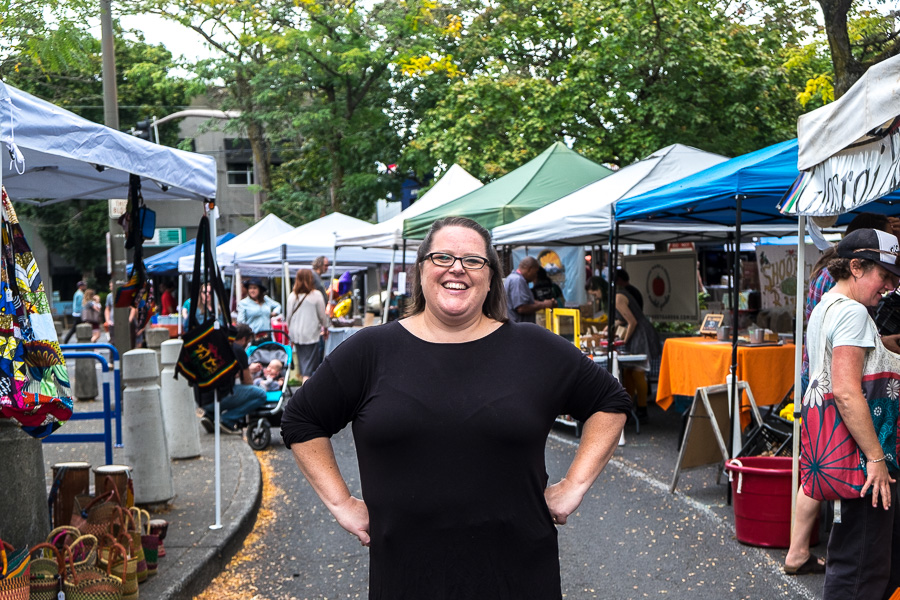
Lindsay Jensen, executive director of the St. Johns Center for Opportunity, stands amongst the canopies at the Saturday Farmers Market, one of the center’s projects. According to Jenson, one of St. Johns’s unique features is its strong sense of community identity. She worries that it may be fading as gentrification dislocates many of the long-term residents. She says that part of her struggle is to maintain affordable housing and diversity in the community.
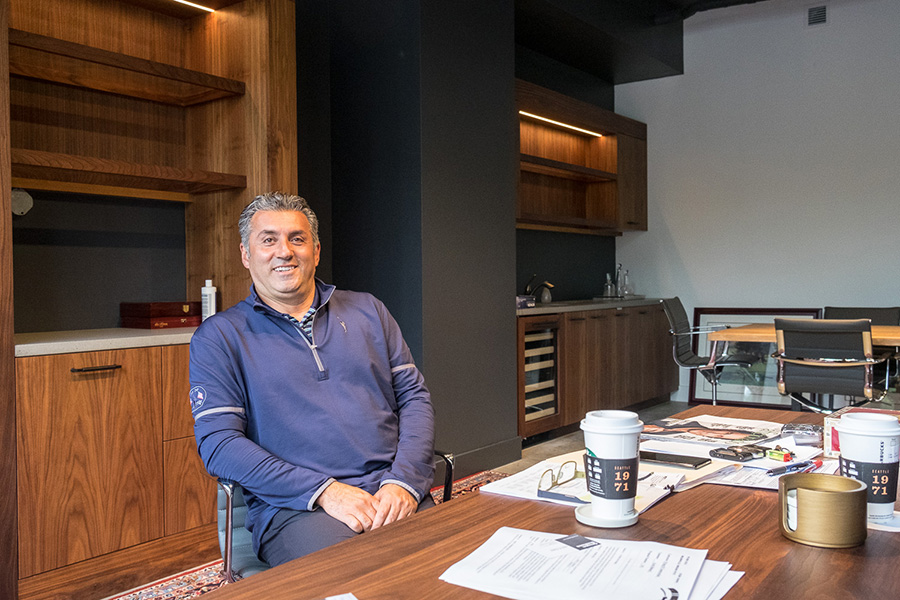
Farid Bolouri, a dentist who began developing real estate as a hobby, built and owns The Union, a large apartment complex that dominates the south end of the business district. The development, which required the demolition of several older buildings, was controversial. Bolouri says “people are resistant to change,” but he thinks that most are happy with the complex now that it’s finished. “You can’t make everyone happy,” he says.
Bolouri also owns the Central hotel, a long vacant building adjacent to the central plaza. He plans to demolish it to make way for a four-story apartment and retail complex.
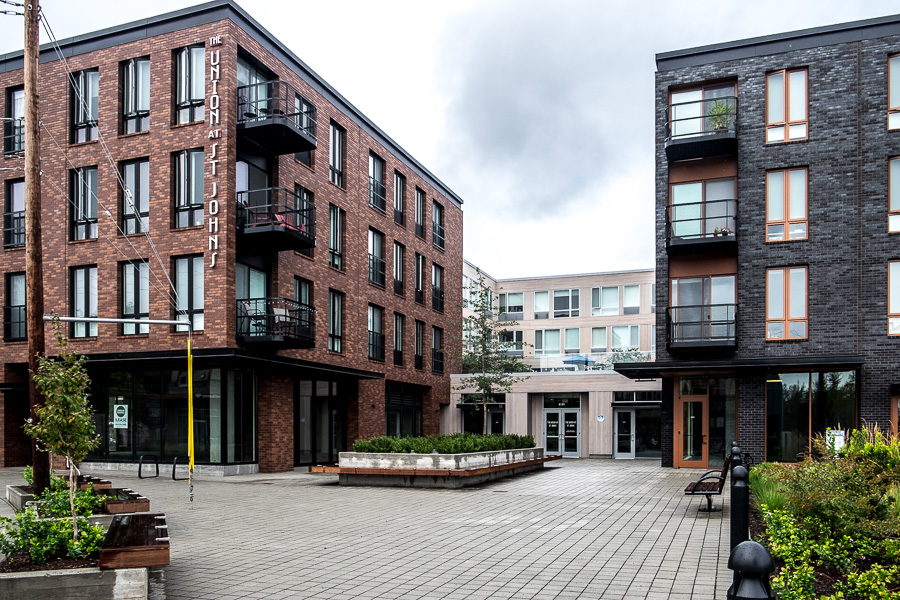
The rents at The Union in St. Johns, completed earlier this year, range from $1,200 for a studio up to $2,295 for the most expensive two bedroom. Five months after opening, it is more than 90% occupied.
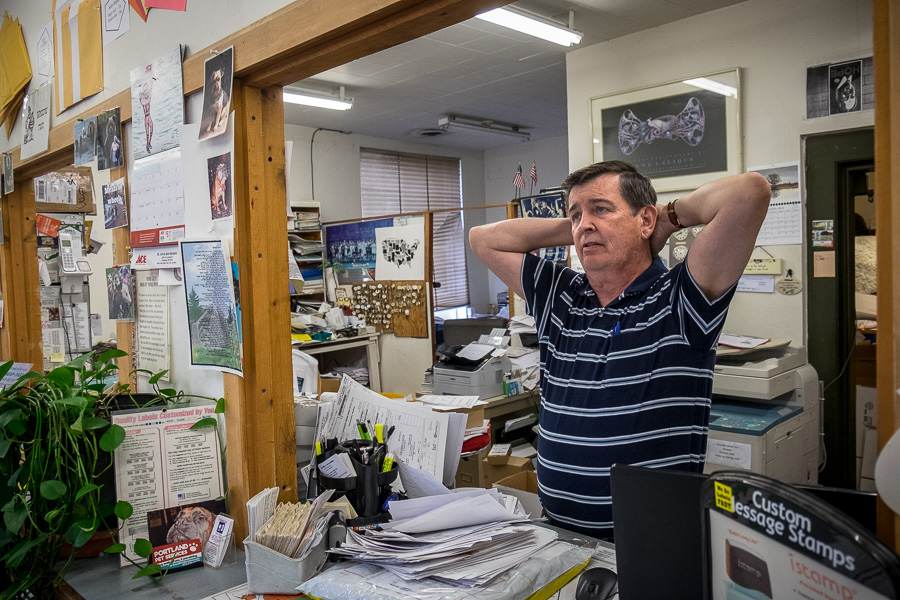
Kenn Gritzmacher opened Peninsula Station, an independent copy and shipping business, 30 years ago. During the construction of The Union, traffic down Lombard Blvd. was diverted away from the St. Johns business district. Gritzmacher says the resulting loss of business would have been fatal to his shop had he not owned his building instead of renting. Since the street has reopened, customers have returned to the store.
Gritzmacher wishes that developer Bolouri had created an umbrella fund to assist businesses not as fortunate.
Gritzmacher appreciates the vitality being brought to the neighborhood by the new businesses and residents, though he laments that so many have been displaced. When he retires, Gritzmacher’s plan is to turn over the business to someone who will continue to run it. “I don’t want this to turn into something I’m ashamed of owning” he says.
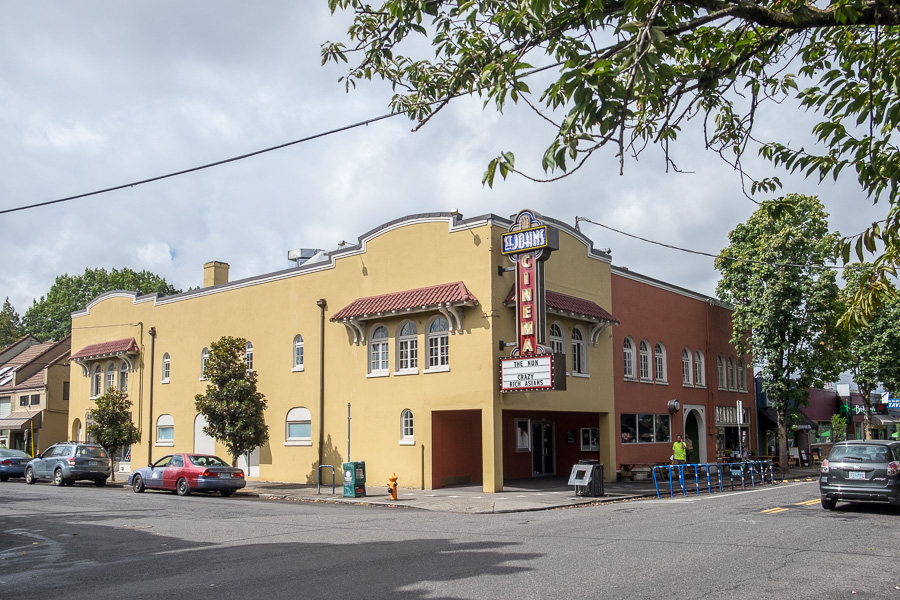
For years the St. Johns cinema was a dilapidated, second-run, low-cost theater. It has been fully renovated and sports a new sign. Now showing first-run blockbusters, it also serves pizza and beer.
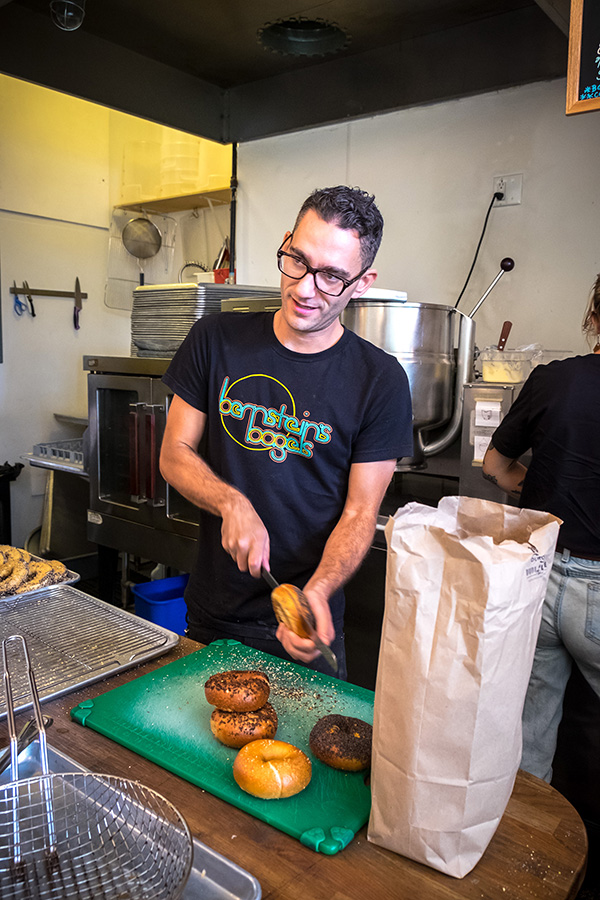
Noah Bernstein opened his hole-in-the-wall, eponymous bagel shop a little over a year ago. While he says that gentrification and higher population density are probably good for business “we kind of moved here because of that stagnant 90’s scene.” But he says that it’s “tiresome to complain about people moving into Portland and ruining the vibe.”
Currently Bernstein makes and sells 300-500 bagels daily. “We have just about maxed out our capacity here” he says. Will they move to larger location? “Yeah!” In St. Johns? “We’ll see.”
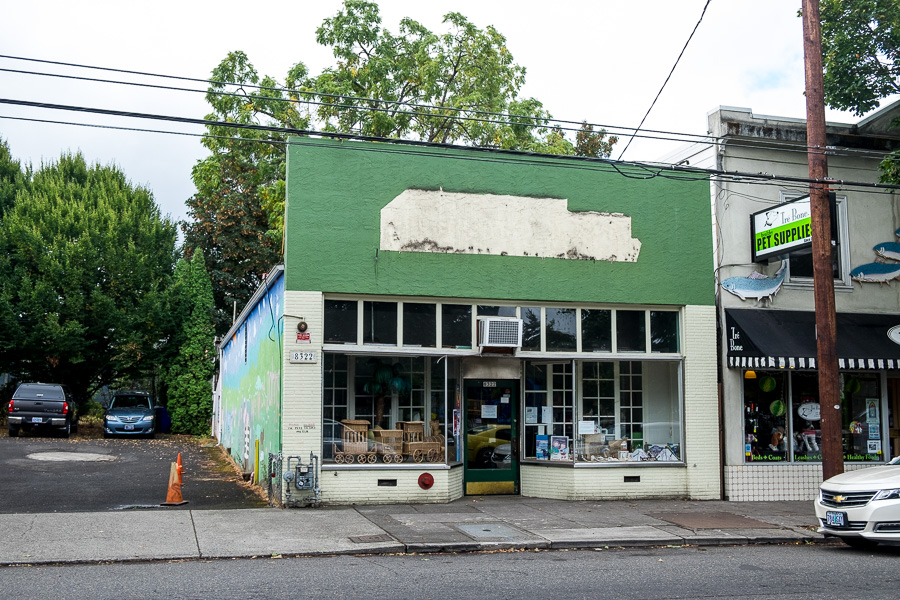
Tulip Pastry Shop was a third-generation family business operating in St. Johns since 1950. It abruptly closed in 2017 and the building is now on the market.
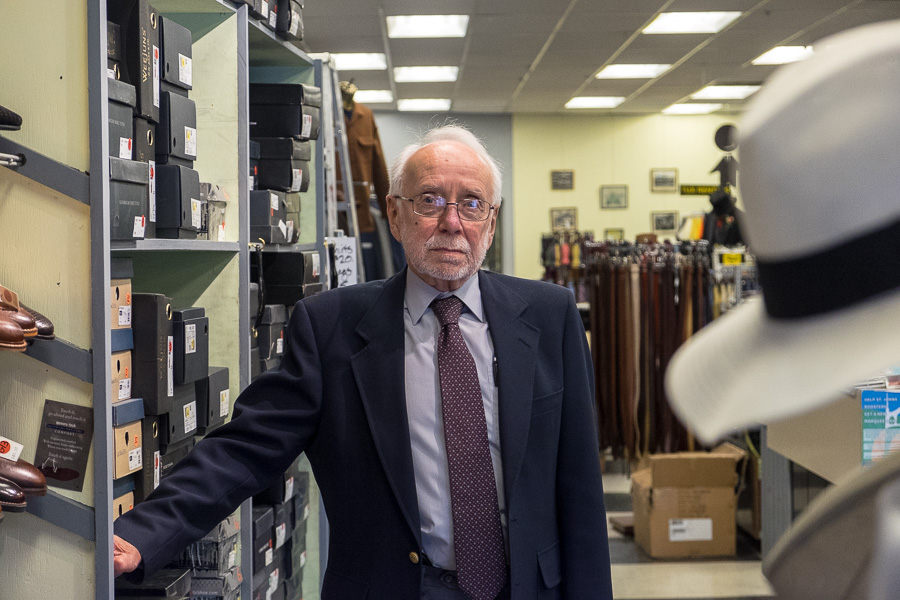
Denny Hassler started working at The Man’s Shop while he was in high school more than 50 years ago. The store was opened in 1940 and is owned by brothers Jerry and Bob Leveton, who took it over from their father. While Hassler admits that “the days of affordable housing are gone” in St. Johns, he enjoys seeing the young families moving into the community.
Owning their building has meant that the Levetons are insulated from fluctuations in real estate values. Much of The Man Shop’s business comes from out of the neighborhood and even out of the state. People drive from as far away as Seattle to buy affordable, tailored men’s clothing.
Hassler only sees St. Johns continuing to improve which is good for business. But he thinks that gentrification has its limits. “I don’t think it will ever be Hawthorn in southeast POrtland. I don’t think we want it to be.”
The current owners are the second generation to take charge of this family business. Will there be a third? Hassler doesn’t know. “Well, there are six kids (of Bob and Jerry) but they’re all getting ready to retire.”
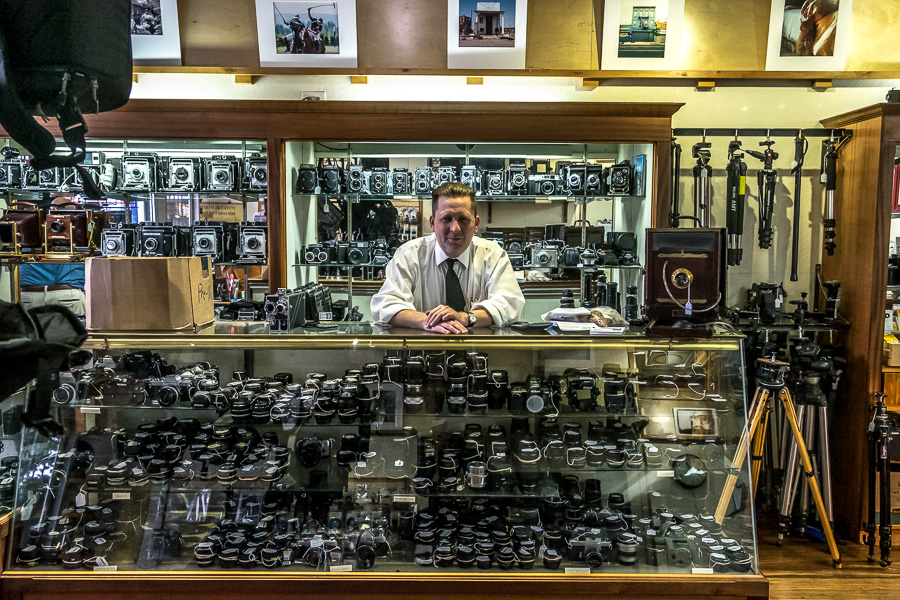
Jake Shivery co-founded Blue Moon Camera and Machine in the autumn of 2001. He wanted it to be an old-fashioned camera store dedicated to film-using gear and optical photographic printing.
When he first arrived he heard that St. Johns was an up-and-coming neighborhood. Shivery felt that the residential area, bisected by a commercial district and flanked by industrial areas meant that the geography was ideal for development.
While it took 15 years to start happening, Shivery feels people should expect additional growth. “The important point is that we live in paradise. We have the climate, we have water. These will become very relevant in the coming decades.” Shivery also owns his building and reports that 30% of his business comes from out of state.
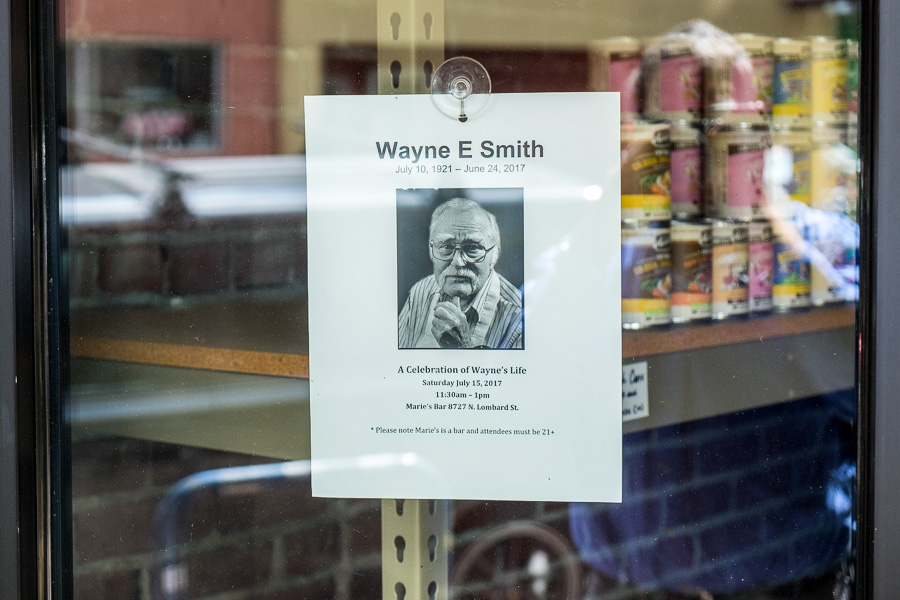
When Wayne Smith finished his tour as a Navy barber during World War Two, he set up shop in St. Johns where he cut hair for more than 70 years. Smith’s death last year marks another loss of the old St. Johns.
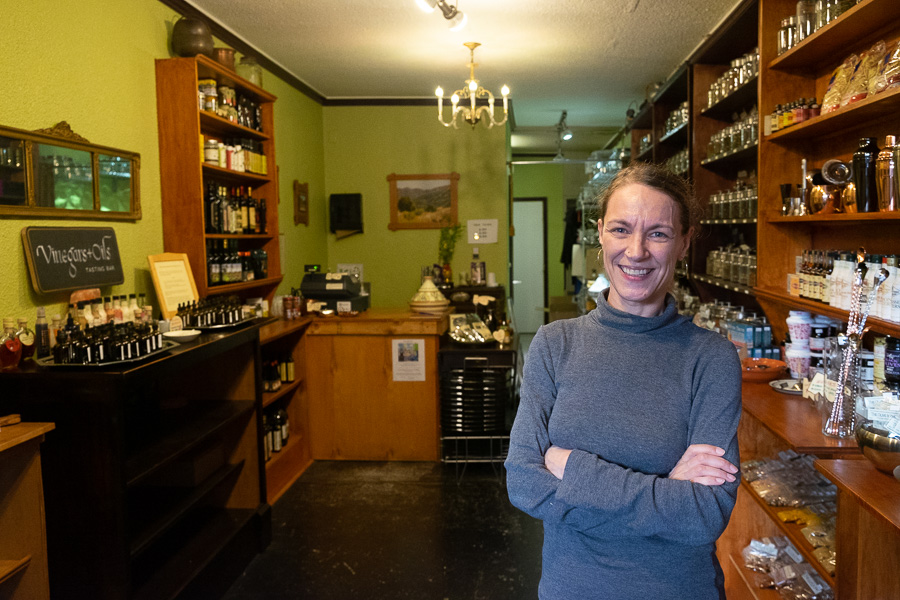
Kim Shaw opened her spice shop Olive and Vine on Parade Day in 2011. She feels that St. Johns is going through an “odd transition time.” While a lot of money and new residents are coming into the neighborhood, her business is down. She worried that the area is becoming a bedroom community and that the new people aren’t patronizing local shops.
As soon as she says this, a young woman enters the store and buys several ounces of fennel candy. She says that she just moved here and is “so happy to find an herb shop.”
Shaw says that maybe more of the new St. Johns residents will find her in time. Increasing rent is a concern for Shaw. She says that the days when a person could just open up a business on a to follow their passion in St. Johns are over. She figures that most of the new retail locations are too expensive for anything but chain stores.
Increases in residential density also worry her. “I love that I can walk to work, but I don’t know if I want to live right next to a three-story apartment building” Shaw says that such a structure is planned to be erected in the lot next to her home.
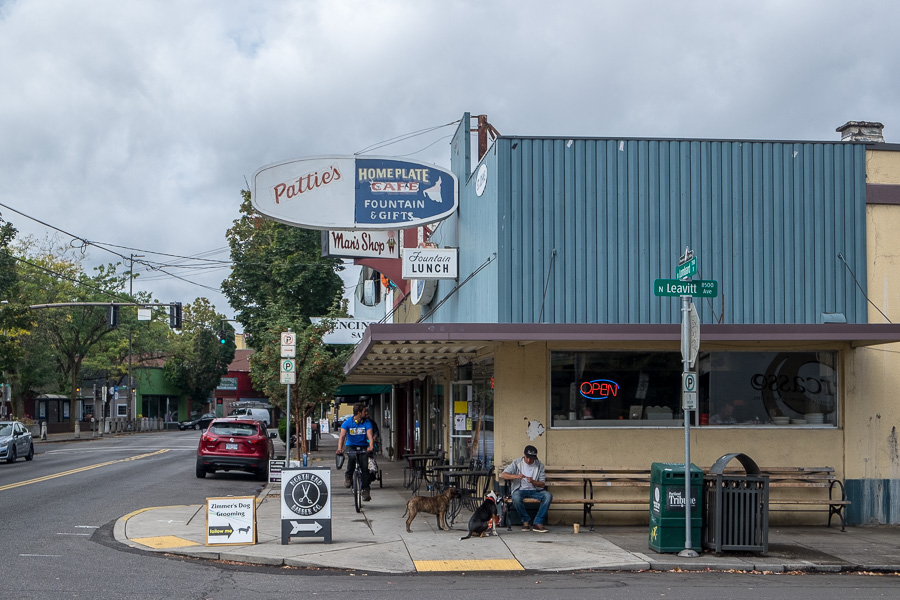
Pattie’s Home Plate Cafe (as seen in the Portlandia Brunch episode) was opened by Pattie Deitz in 1998, but it had been a greasy spoon, lunch counter for many years prior. Doubling as a weird sort of thrift store, Home Plate is, in some ways, the quintessence of old St. Johns. It is a strange blend of eccentricity and blue collar convention. A friend has referred to it as the “Wailing Wall” of St. Johns.
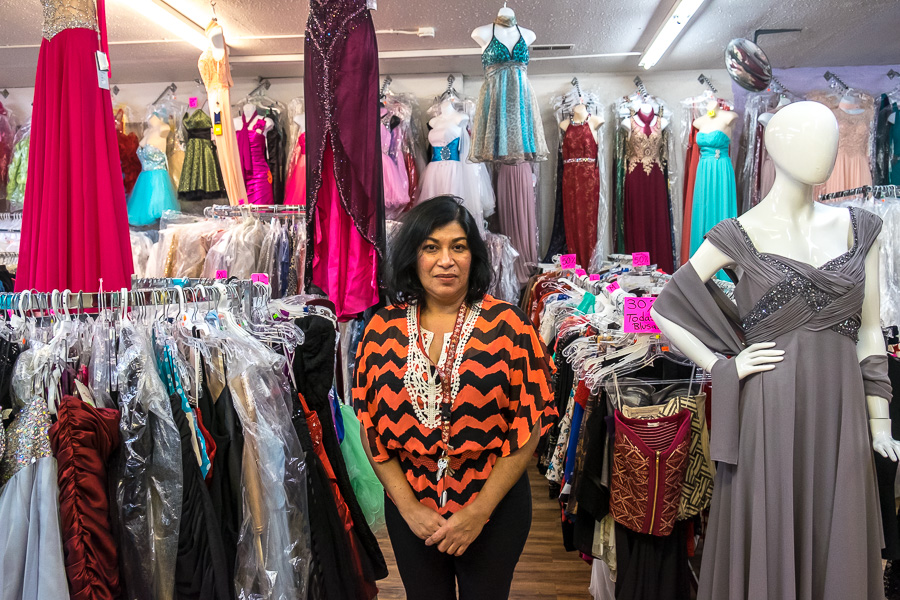
“Clothing store Novedades Prado’s owner Maribel Prado feels that St. Johns’s shifting demographics are pushing her out. She said that while hers is a Mexican store that specializes in quinceaneras, she wants it to be for everyone. New developments have made it more difficult for her clients to park. She says that she loves the way the community is evolving, “but it’s not for us.”
The waning Hispanic community has left Prado with too small a customer base. Even though she owns her building, business has declined to a point where she has decided to close her shop by the end of the year and rent out the space.


